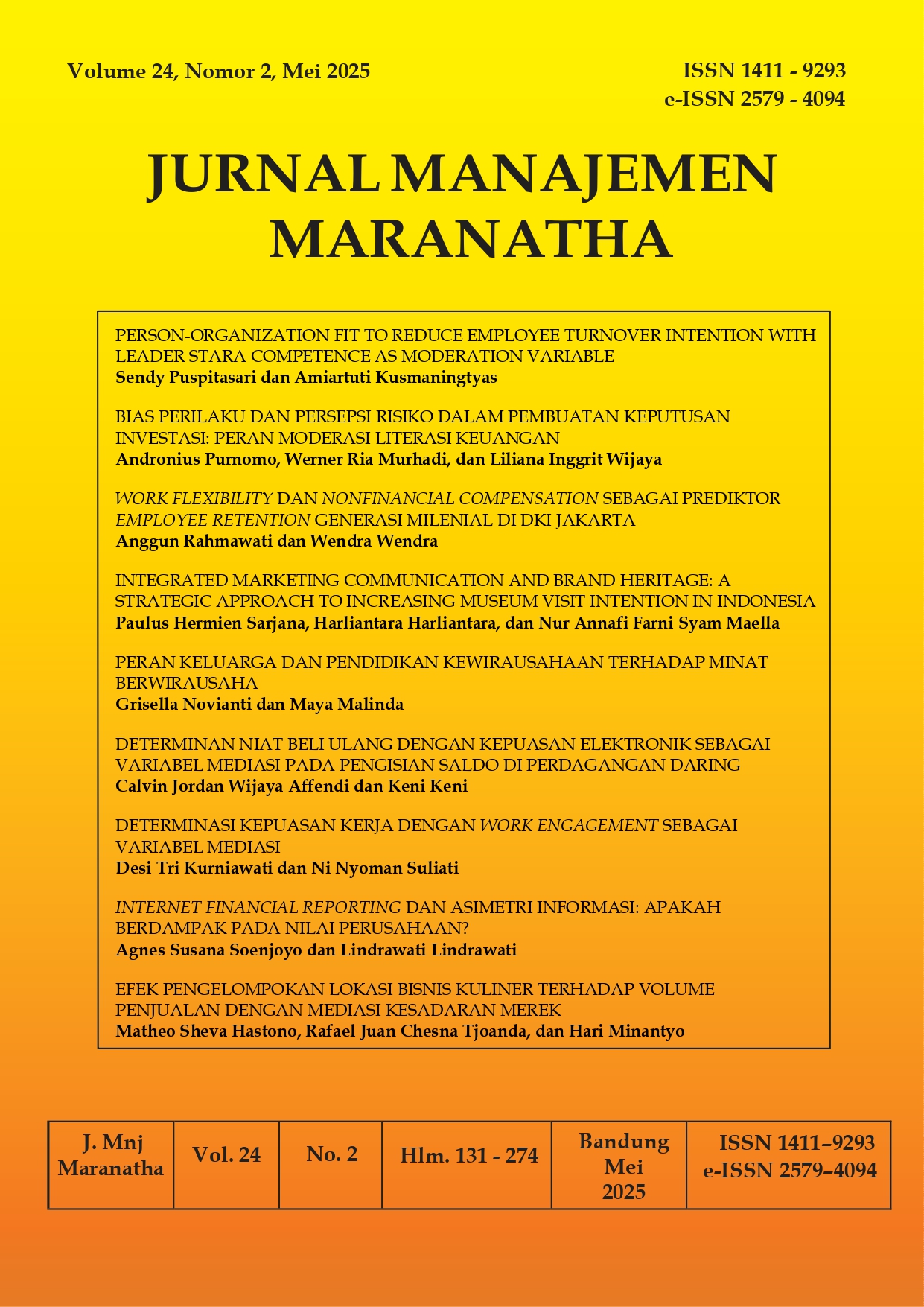Work flexibility and nonfinancial compensation as predictors of millennial employee retention in DKI Jakarta
Main Article Content
Abstract
Downloads
Article Details

This work is licensed under a Creative Commons Attribution-NonCommercial 4.0 International License.
References
Aguenza, B. B., & Som, A. P. M. (2012). Motivational factors of employee retention and engagement in organizations. International Journal of Advances in Management and Economics, 1(6), 88-95. https://www.managementjournal.info/index.php/IJAME/article/view/233/222
Arasanmi, C. N., & Krishna, A. (2019). Employer branding: Perceived organisational support and employee retention - The mediating role of organisational commitment. Industrial and Commercial Training, 51(3), 174-183. https://doi.org/10.1108/ICT-10-2018-0086
Badan Pusat Statistik. (2021). Hasil sensus penduduk 2020 provinsi DKI Jakarta. https://jakarta.bps.go.id/id/pressrelease/2021/01/22/541/jumlah-penduduk-hasil-sp2020-provinsi-dki-jakarta-sebesar-10-56-juta-jiwa.html
Bloom, N. (2014). To raise productivity, let more employees work from home. Harvard Business Review, 92, 1-2 (January). https://hbr.org/2014/01/to-raise-productivity-let-more-employees-work-from-home
Bohlander, G. W., & Snell, S. A. (2013). Principles of human resource management. Cengage Learning
Boselie, P. (2014). Strategic human resource: A balanced approach. McGraw-Hill Education
Branham, L. (2005). The 7 Hidden reasons employees leave. Amacom
Cappelli, P. (2000). A market-driven approach to retaining talent. Harvard Business Review, 78(1), 103-112. https://hbr.org/2000/01/a-market-driven-approach-to-retaining-talent

